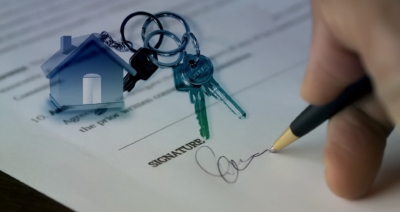Finding your dream home in the Philippines can be a rewarding experience. By investing in the right property, you can be sure your hard-earned money will continue to grow just as the country’s property market flourishes.
For first-time home buyers, however, the process can sometimes be overwhelming with all the complexities of house hunting and ensuring all the pertinent documents, such as land titles and tax declarations, are authentic. This real estate checklist will ensure you’ve got all your bases covered before taking the plunge.
Start with a trusted licensed real estate broker or agent
Buying a home can take months – even years – for new investors who are still navigating their way through the property market, but having a real estate broker or agent who can help you go through the process from start to finish can alleviate some of the stress of buying a home. Work with someone who knows the industry well, has a proven track record, and puts the buyer’s interests front and center.
Know your financial standing
Before going house hunting, it’s essential to know your financial capacity first. This will help you gauge the kind of properties that suit your budget, as well as the mortgage and equity (down payment) you’ll need when purchasing a property. To do this, get your financial documents in order. These include:
- Bank statements
- Income tax returns
- Certificate of employment and income
- Pay slips
- Audited financial statements for business owners
- Credit information
- Other proofs of financial capacity
Get a mortgage pre-approval
Once you have your financial documents ready, submit them to banks offering the best housing loans and secure a mortgage pre-approval. Pre-qualifying for a housing loan shows sellers you are ready and able to cover the cost of the property. The pre-approval outlines the following information:
- Loan amount
- Loan tenor (number of years to repay the loan)
- Monthly amortization
- Interest rates
Choose five to seven locations you are interested in
Imagine your ideal neighborhood and its attributes then list down five to seven locations that meet your standards. You can ask yourself the following questions:
- Do you love the hustle and bustle of the metro?
- Do you prefer the slower pace of a provincial town?
- Do you want the small-city vibe of a provincial capital?
Write a list of properties you would like to view
With your ideal neighborhood in mind, it’s time to identify the kind of home you would like to live in. Work with your agent in finding a match in your selected areas.
- Do you prefer a house with a yard?
- A townhouse with a smaller footprint?
- Or a condominium near the business district?
Compare properties
Different factors influence the market value of a property. When narrowing down your options, consult your agent about the pros and cons of each location and how these affect the property prices in your neighborhood of choice. Here are some factors to consider:
- Location (downtown, urban, suburban or rural communities)
- Accessibility to offices, schools and establishments
- Security/Crime rate
- Health and safety hazards (flooding, earthquakes, etc.)
- Population density
- Neighborhood amenities
- Ownership history
- Square footage
- Design features
- Smart home/technological features
Schedule a visit to your property options by area
Don’t rush through property viewings. Instead, allocate enough hours for visiting each site so you can get a feel of the neighborhood and take a much closer look at each property. One tip for buyers comparing multiple options is to schedule a day of visits to different properties that are located in the same area. The time you save traveling between sites can go towards inspecting each property better.
Get to know the seller and the community
Are you buying directly from the current owner? Get to know them better and their reason for selling the property. Ask them what they would like to improve in their home if they weren’t selling it. Also spend time talking to other residents about concerns they’ve had in the area in recent years. Their answers will give you a hint as to the kind of challenges other property owners face.
Check the track record of the developer
If you’re buying from a developer, make sure to check the company’s profile, financial position and other projects. Examine their track record and relationship with customers. How do homeowners rate their experience of living in the area?
Assess the property inside and out
Some properties look beautiful at first glance. However, a closer inspection might reveal damage or design flaws that could become an issue later on. When viewing a property, always keep an eye out for these red flags:
- Water marks on the walls from past flooding
- Water marks on the ceiling from a leaky roof
- Cracks on the walls or floors
- Poor and uneven tiling
- Creaky, bouncy or uneven floors
- Low water pressure (when testing a faucet, shower or flush)
- Exposed electricals and plumbing
- Damaged wood, blisters in wood floorings, mud tubes (signs of termite infestation)
- Doors or windows that don’t fit within their frames
- Awkward room sizes
- Awkward door/window positioning
- Steep staircases
- Bad odors (indication of mold and mildew)
- Persistent noise in the area
- Areas of the property that the seller avoids showing
Check that the seller is the true owner of the property
Purchase the property only if you are sure that the seller is indeed the registered owner. Ask for a copy of the owner’s government identification cards and check the information against the title.
Verify the authenticity of the Transfer Certificate of Title
The seller should provide you with a photocopy of the Transfer Certificate of Title. Double-check the title number and owner’s name against the original copy kept by the Registry of Deeds, which is located at the city or municipal hall. The duplicate copy from the seller should reflect the exact same information stated in the original copy. Once the title is proven to be authentic, you can request a certified true copy from the registry. Here are other signs that the title is genuine:
- The owner’s copy should clearly state it is the “Owner’s Duplicate Copy” on the left-hand side
- The owner’s copy should have a red seal that is not blotted, stained or damaged
- Both the original and duplicate copies should contain security marks such as “NLTDRA” or “LRA” when held against the light
Double-check that the land title is clean
At the back of the title, there’s a section specifically for “Encumbrances” or claims to the property made by any person other than the owner. Some claims may restrict the owner from selling off the property, while others – such as liens – give another person the right to take ownership of the property if the original owner fails to pay their mortgage. A “clean” title should have no markings on the back page.
Validate the description of the land you’re buying
Titles have technical descriptions that help to distinguish a property. They should detail the actual size and boundaries of the land you’re buying. You can validate these descriptions with the Registry of Deeds, but it’s best to hire a private surveyor or geodetic engineer to verify the measurements for you.
Secure pertinent documents for due diligence
Don’t just rely on the owner’s copy of the title or their promise of updated real estate tax payments. Check that the owner has paid their annual property taxes by asking for certified true copies of their tax declarations and their original tax receipts.
Get a property appraisal
Before putting in an offer, consult a licensed real estate appraiser first since they can determine the fair market value of the property. This is crucial when you’re getting ready to pull out a housing loan and need to present the real value of the property to the bank. Talk to your lender about the process of hiring a third-party appraiser.
Negotiate a good price for your property of choice
After knowing the fair market value of the property, you can negotiate a reasonable offer to the seller. Keep in mind if there are factors, such as damage to the house, which may have caused the value of the property to depreciate. This should be factored into the offer.
Submit a Letter of Intent
A handwritten Letter of Intent should signify your desire to purchase the property and include the following details of your offer:
- Total contract price
- Down payment/initial deposit
- Payment terms
- Period of due diligence (the buyer’s opportunity to evaluate the property)
- Deadline for the seller to agree to the terms
Stipulate and pay the reservation fee or earnest money
The loan application process and period of due diligence may take weeks to complete. In the meantime, be ready to pay the seller the reservation fee or earnest money. In return, the seller should provide you with a reservation letter promising to cease negotiations with other potential buyers.
Document every agreement in writing and have the contracts notarized
Once you’ve paid the down payment, the seller should issue the sale contract with all the agreements stipulated during the negotiation. The seller remains the owner of the property until you’ve paid the contract price in full. However, if you’ve chosen to pay the entire cost up front, the seller should instead give you a deed of absolute sale. Remember: for all agreements to be legally binding, they must be signed by both the seller and buyer and notarized.
Ready to step into your new home?
Buying a home doesn’t have to be daunting, but it requires preparation and a good understanding of the ins and outs of the property market. Real estate professionals are here to guide you through the buying process and to ensure your dream of a beautiful home comes to life.
It’s all a matter of finding the right property and the right deal on RE/MAX Gold.



